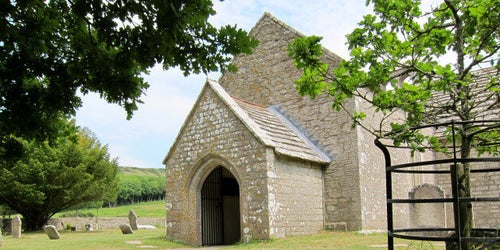

It's tempting to think of ghost towns as nothing more than a cliché of horror films or a stereotypical image of the American Wild West, but in fact abandoned towns and villages that have simply dropped off the map can be found much closer to home than that. Adapted from The British Isles: A Trivia Gazetteer, listed here are some of the true stories behind the disappearance and abandonment of seven real-life British ghost towns.
Bothwellhaugh, Lanarkshire
The village of Bothwellhaugh near Glasgow developed suddenly in the late 1880s after coal was discovered in the local area. Several collieries and hundreds of homes were quickly built, and by 1910 Bothwellhaugh's 458 houses were home to some 965 staff and their families. However, as mining technology improved in the 20th century, far fewer miners were required on site and the village soon began to decline almost as quickly as it had grown. It was finally abandoned completely in the 1960s.
Hampton-on-Sea, Kent
The north Kent village of Hampton-on-Sea thrived in the mid 19th century at the hands of a local oyster-dredging company that invested thousands of pounds in developing the town as a base for its employees. However, construction of a pier as part of the village's development in 1865 inadvertently disrupted a series of powerful sea currents offshore, which broke up into a series of churning eddies and soon began to erode the shoreline. Within a matter of decades, land was being lost to the sea at an astonishing rate of 6ft per year, and the town finally had to be abandoned in the 1910s.
Heathrow, London
One of the busiest airports in the world, London's Heathrow takes its name from the old Middlesex hamlet of Heathrow that was demolished in the 1940s to make way for its construction. A mainly agricultural settlement dating back hundreds of years - its name is first recorded in a document dating from as early as 1410 - the village once stood where the airport's Terminal 3 building now stands today.
Kenfig, Bridgend
A mediaeval port on the Bristol Channel with its own Norman castle and a population of perhaps as many as 1,000 people at its peak in the mid-1300s, the Welsh town of Kenfig is thought to have once been one of the largest towns in Glamorgan. Gradually, however, it was deserted as vast amounts of sand from nearby dunes began slowly to encroach on it, choking fields and engulfing whole buildings and roads. Finally, with the loss of the entire village church to the sands in the late 15th century, Kenfig was abandoned, with many of its inhabitants choosing to move further inland to the nearby village of Pyle to rebuild their lives. Today, the only part of the village that is still visible above the sands is the ruined topmost point of what was once Kenfig Castle.
Mardale Green, Cumbria
The old Lake District village of Mardale Green in Cumbria is one of several across the country that have been 'drowned' by the construction of reservoirs or dams. Mardale itself was lost in 1935 with the opening of Haweswater Reservoir, formed by the construction of a dam that flooded the valley in which the village once stood. Although most of its buildings were destroyed in the process, Mardale's local church was painstakingly dismantled brick by brick, with the stone being used to create a short pier on the reservoir's shoreline. What little remains of the rest of the village can still occasionally be seen when water levels in the reservoir are at their lowest.
Tide Mills, East Sussex
The old village of Tide Mills near Newhaven on the Sussex coast first appeared around a flour mill built on the site in the late 1700s. When the mill closed in 1883 the village remained unchanged for a time until the Housing Act of 1930 was passed, which allowed local authorities to condemn houses as 'unfit for human habitation' for the very first time. Amidst reports of appalling sanitation, a total absence of street lighting and a non-existent sewerage system - all vividly described in a damning report printed in the Daily Mail that branded Tide Mills a 'hamlet of horror' - the local council forcibly rehomed the village's last remaining inhabitants in 1937, and Tide Mills was eventually abandoned on grounds of public health.
Tyneham, Dorset
In 1943, at the height of the Second World War, the War Office commandeered the entire village of Tyneham in Dorset and forced its 225 inhabitants out of their homes so that the land could be used to train troops. In a letter sent to every home in the village, the Government were said to 'appreciate that this is no small sacrifice', but that it is 'in the National Interest ... to move you from your home' - residents were told that they had until December 19, barely four weeks later, in which to move out. Although the evacuation was originally intended to be temporary, a compulsory purchase order was issued in 1948 that allowed the village to remain in the hands of the Ministry of Defence, and it has remained uninhabitable ever since.
Adapted from The British Isles: A Trivia Gazetteer.